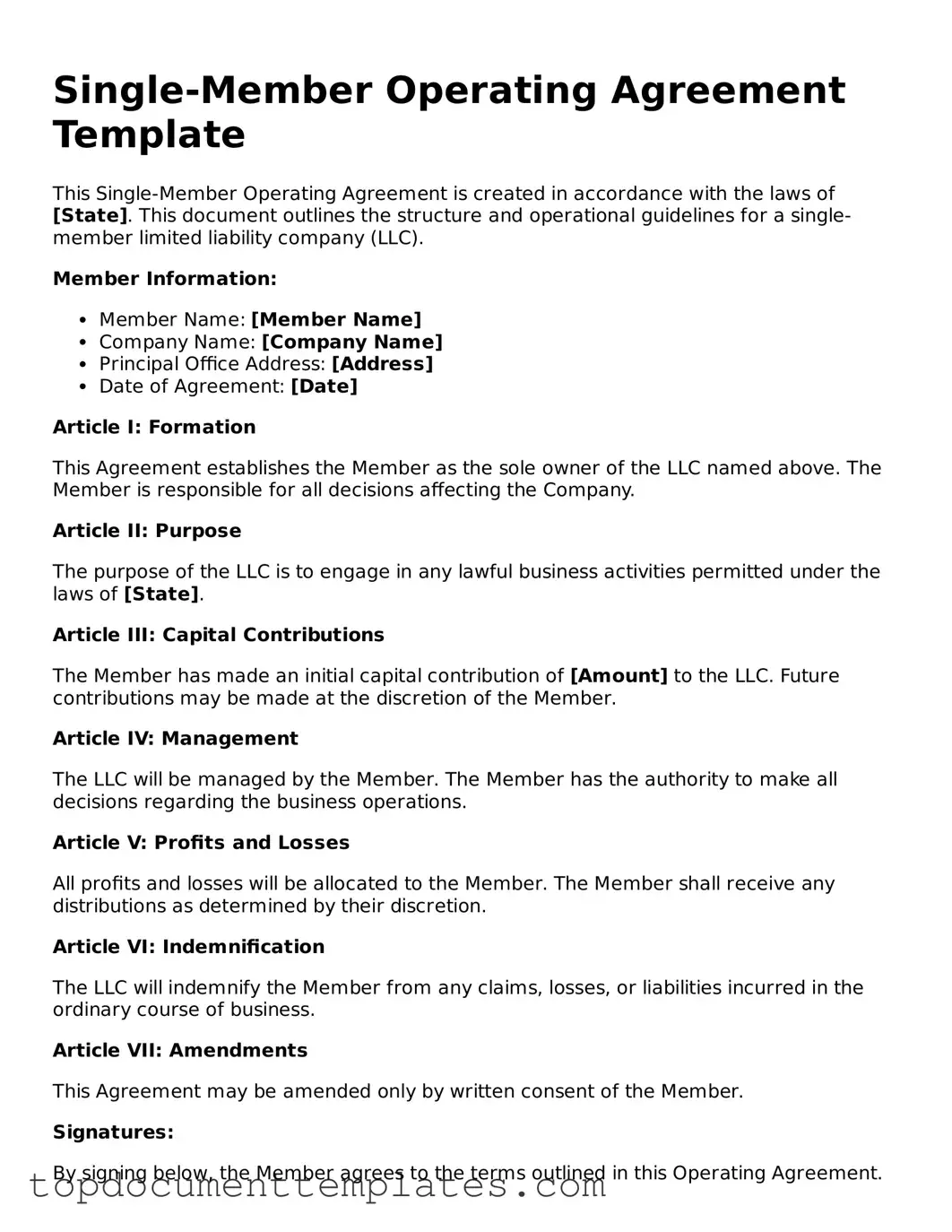When establishing a single-member limited liability company (LLC), an operating agreement serves as a crucial document that outlines the management structure and operational guidelines for the business. This agreement is particularly important for sole proprietors who wish to enjoy the benefits of limited liability while maintaining clear control over their enterprise. A well-crafted single-member operating agreement typically includes essential elements such as the member's identity, the purpose of the LLC, and the procedure for making decisions. Additionally, it addresses financial matters, including how profits and losses will be distributed, as well as provisions for handling potential changes in ownership or management. By defining these aspects, the agreement not only provides clarity and direction but also helps to reinforce the separation between personal and business assets, thus protecting the member from personal liability in the event of legal issues. Ultimately, a single-member operating agreement is a foundational document that enhances the legitimacy of the LLC and fosters a structured approach to business operations.
